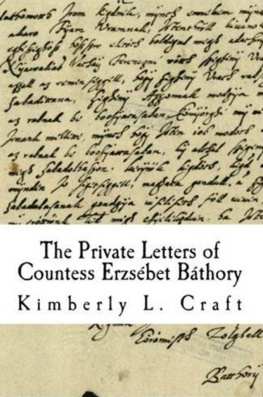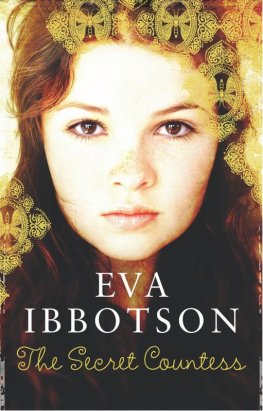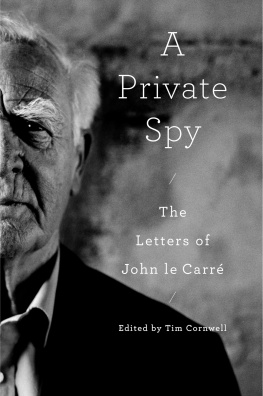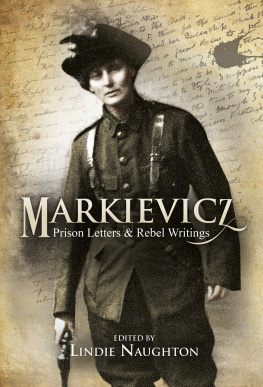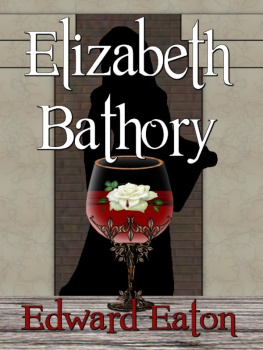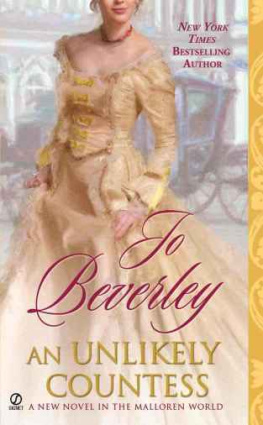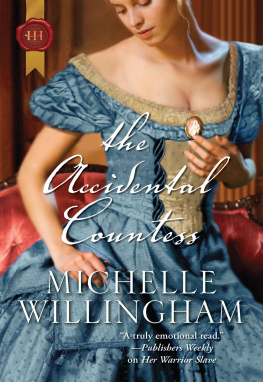Kimberly Craft - The Private Letters of Countess Erzsébet Báthory
Here you can read online Kimberly Craft - The Private Letters of Countess Erzsébet Báthory full text of the book (entire story) in english for free. Download pdf and epub, get meaning, cover and reviews about this ebook. year: 2011, genre: Romance novel. Description of the work, (preface) as well as reviews are available. Best literature library LitArk.com created for fans of good reading and offers a wide selection of genres:
Romance novel
Science fiction
Adventure
Detective
Science
History
Home and family
Prose
Art
Politics
Computer
Non-fiction
Religion
Business
Children
Humor
Choose a favorite category and find really read worthwhile books. Enjoy immersion in the world of imagination, feel the emotions of the characters or learn something new for yourself, make an fascinating discovery.
- Book:The Private Letters of Countess Erzsébet Báthory
- Author:
- Genre:
- Year:2011
- Rating:3 / 5
- Favourites:Add to favourites
- Your mark:
- 60
- 1
- 2
- 3
- 4
- 5
The Private Letters of Countess Erzsébet Báthory: summary, description and annotation
We offer to read an annotation, description, summary or preface (depends on what the author of the book "The Private Letters of Countess Erzsébet Báthory" wrote himself). If you haven't found the necessary information about the book — write in the comments, we will try to find it.
The Private Letters of Countess Erzsébet Báthory — read online for free the complete book (whole text) full work
Below is the text of the book, divided by pages. System saving the place of the last page read, allows you to conveniently read the book "The Private Letters of Countess Erzsébet Báthory" online for free, without having to search again every time where you left off. Put a bookmark, and you can go to the page where you finished reading at any time.
Font size:
Interval:
Bookmark:
The Private Let ters of
Countess Erzsbet Bthory
Kimberly L. Craft, Esq.
(The Author of Infamous Lady: The True Story of Countess Erzsbet Bthory )

The Private Letters of Countess Erzsbet Bthory
First Edition
2011 by Kimberly L. Craft. All rights reserved. No part of this publication may be reproduced, stored in a retrieval system, or transmitted, in any form or by any means, electronic, mechanical, photocopying, recording, or otherwise, without prior written permission.
Printed in the United States of America.
ACKNOWLEDGEMENTS
I offer my thanks first to those researchers who have already given us so much on the controversial and complex subject of Erzsbet (Elizabeth) Bthory and to whom I am most grateful: in Hu ngary, Lszl Nagy, Katalin Pter, Irma Szdeczky-Kardoss and Gbor Vrkonyi; in the U.K., Tony Thorne; in Germany, Michael Farin; and in the U.S., Dennis Bthory-Kitsz and the late Raymond T. McNally.
I am also deeply grateful for all of the assistance from archivists Zsfia Komlsi-Gera and va Horvth, as well as the director, Jnos Kalmr, at the Hungarian National Archives (MOL) in Budapest. I would also like to thank Vicky Janik and Angela Kafcsak for their help with the translations, as well as their continued support and insight into Hungarian history and culture.
From the Community of Bthory Scholars & Enthusiasts (www.InfamousLady.com), I could not have finished this project without the constant encouragement and enthusiasm of our administrator, Liz Carrington, and friends from around the world, including: Laresa Tapia, Charles Everett, Suzann Bain, Michael Workman, Brian Rapp, Franois Floch, Dennis Bthory-Kitsz, Bec Wurzbacher, Ravin Tija Maurice, Paul Bogusz, Jason OKeefe, Laurie Feyerer Hinderman, Rebecca Johns Trissler, Jim Haggard, James Jeffrey Paul, Peter Sproch, Tereza Viera-Reed, and Elaine Lamkin. I am also grateful for all of our members, and for those who supported my first project on the Countess, Infamous Lady: The True Story of Countess Erzsbet Bthory .
I hope you all enjoy this latest glimpse into Countess Bthorys life.
ABOUT THE LETTERS
There are over forty letters assembled here written by, or on behalf of, Countess Erzsbet (Elizabeth) Bthory (1560-1614). For those already familiar with Countess Bthorys biography, this book offers new source material and provides more insight into her daily life and situation. This work also serves as an important supplement to the book, Infamous Lady: The True Story of Countess Erzsbet Bthory . For those who are just beginning their exploration of Countess Bthory, these letters reveal a glimpse into the life of a controversial noblewoman who lived during the late 16 th and early 17 th centuries. A basic biographical sketch is also provided.
Of course, Countess Bthorys letters are of primary importance, many of which are published here in English for the first time. These include business notes and memos written to her accountant, Andrs Hjas, and her castle provisor and property manager, Imre Vasvry; an urgent and private letter to her court master, Benedek Dese; and correspondence regarding civil and criminal matters to her deputy sheriff, Balzs Kisfaludi. These letters demonstrate the depth of her administrative capabilities and meticulous concern for her property.
We also have her most private writings penned to fellow nobility: a warning letter to Lord Gyrgy Bnffy who ruthlessly invaded her property; the frustrated disbelief she expresses to Lord Pl Nyry when inexplicably denied access to her castle by the Germans in Pozsony; and, finally, the confidential letters written to her long-time friend, Count Ferenc Batthyny. These letters tell us much about her daily life and provide insight into the historical events taking place in her world. Here we find her pleas for help, asking Lord Batthyny for his advice in a time of dangerous politics and treachery. We learn of her fear when the country is invaded during a rebellion, her manor home commandeered, towns destroyed, and people killed; her depression and frustration just weeks after her husbands death; and also her unwavering obedience to duty throughout. Just months before her arrest, when she surely knew that forces were conspiring to confiscate her property and take her into custody, she still tended to her daily routines, requesting help from Batthyny for roof maintenance on their shared home in Vienna, and asking the local sheriff to inquire after two hooligans. There is no sensationalism here, no stories of torture or bloodlust told by witnesses and embellished over the years by fiction writers. We have only the words of the woman herself.
It is both ironic and telling that, while many noble families have maintained private or national archives in which letters, documents, and heirlooms are stored, no such archive exists for the Bthorys. This is particularly odd since the Bthory family included a king, cardinal, princes, counts, countesses, and an enormously wealthy dynasty that endured over four hundred years in Central and Eastern Europe. Perhaps we have simply not yet found the archive, or perhaps it has been lost to usthe victim of wars, theft, or deliberate destruction by those who hated and feared what the Bthory name later came to mean.
Equally ironic, however, is the fact that a related archive, that of Countess Bthorys husband, Ferenc (Francis) Ndasdy, exists but is shockingly small in its holdings given the enormous size of the familys wealth. Ferenc Ndasdy and his wife owned dozens of estates spread across multiple countries and, like all large landowners, communicated frequently regarding administrative, personal and political matters. Yet, only a few dozen correspondences remain. These meager holdings are held in the Ndasdy Archives of the Hungarian National Archives (Magyar Orszgos Levltr). And of these, only a few are private in naturethe rest are primarily administrative memos, routine in nature, written to and from servants.
This scanty supply of resources has left researchers perplexed. Gbor Vrkonyi, for example, wondered if, perhaps, a separate archive exists in some other location which houses more of the private correspondence. But if so, where?
The third irony is that the majority of currently known private letters written by Countess Bthory are found neither in Bthory nor Ndasdy Archives but rather in the archives of the Batthyny family! Ferenc Batthyny was a family friend and military colleague of Ferenc Ndasdy. After Count Ndasdys death, Lady Bthory wrote frequently to Batthyny for advice. Fortunately for us, the Batthyny family preserved a number of her letters which are the subject matter of this book. (Indeed, we also find that the Batthyny family preserved two letters from Ferenc Ndasdy written to neighboring lord, Mikls Plffy!) Unfortunately, since Count Batthynys initiating correspondence and replies are not available, we must speculate at times as to the nature of the conversation. Count Batthynys letters were received by Countess Bthory and would have been kept amongst her private papers, many of which, as discussed, are missing.
We do know, however, that in her lifetime Lady Bthory maintained all of her familys correspondence. For example, In February of 1604, one month after her husbands death, the newly widowed Countess Bthory received a letter from Lord Batthyny, requesting that she send various documents from amongst the late Count Ndasdys papers. The flustered widow replied that she had not yet had time to open her husbands letter chest or go through his papers. This chest and its holdings must have been significant, since she had to summon her court master, Imre Megyery, to assist her in sifting through the contents. She also apologized that she could not give Batthyny a specific date as to when the review would be completed.
Next pageFont size:
Interval:
Bookmark:
Similar books «The Private Letters of Countess Erzsébet Báthory»
Look at similar books to The Private Letters of Countess Erzsébet Báthory. We have selected literature similar in name and meaning in the hope of providing readers with more options to find new, interesting, not yet read works.
Discussion, reviews of the book The Private Letters of Countess Erzsébet Báthory and just readers' own opinions. Leave your comments, write what you think about the work, its meaning or the main characters. Specify what exactly you liked and what you didn't like, and why you think so.

